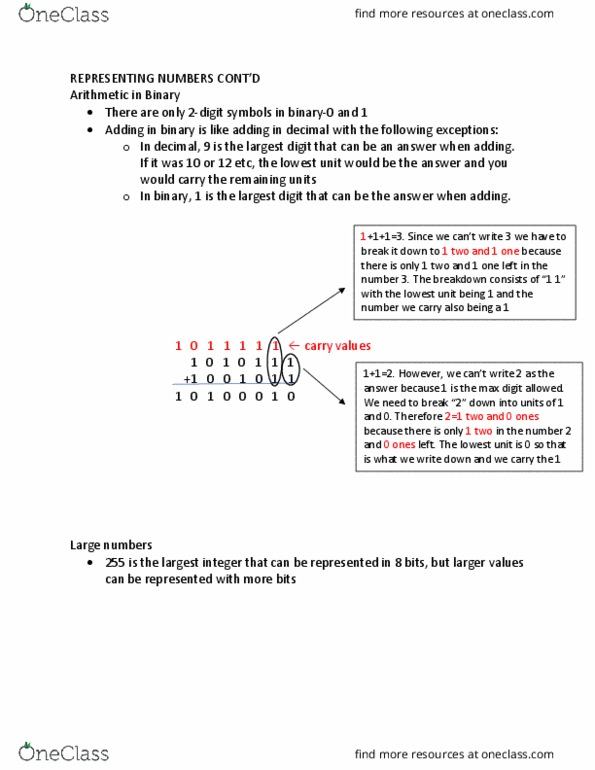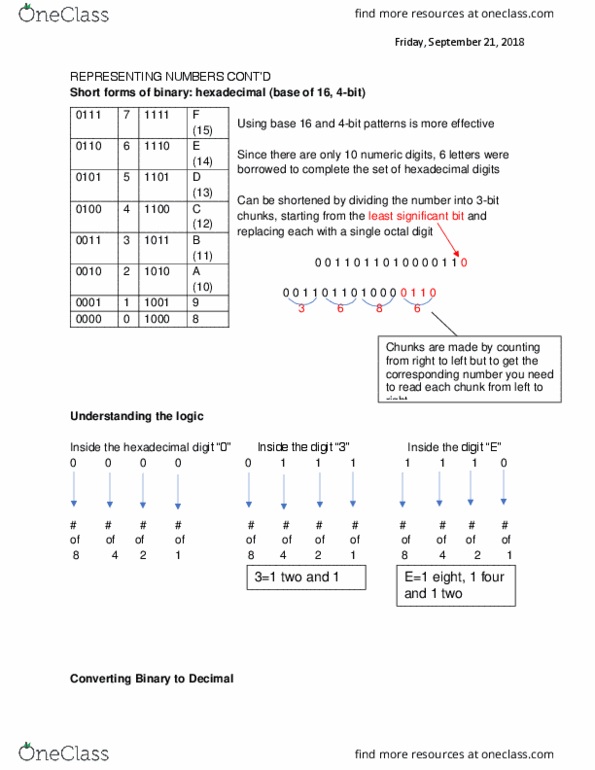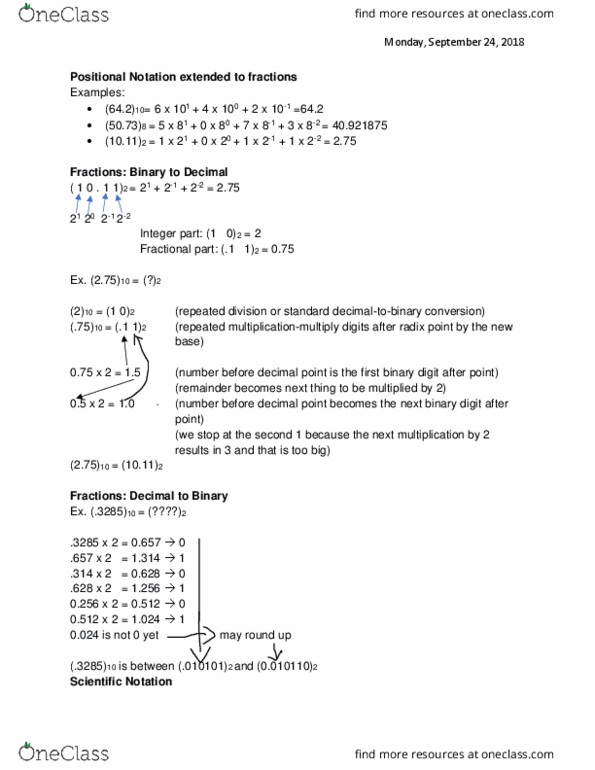EECS 1520 Lecture Notes - Lecture 8: Octal, Binary Number, Junkers F.13
EECS 1520 verified notes
8/14View all
Document Summary
Short forms of binary: hexadecimal (base of 16, 4-bit) Using base 16 and 4-bit patterns is more effective. Since there are only 10 numeric digits, 6 letters were borrowed to complete the set of hexadecimal digits. Can be shortened by dividing the number into 3-bit chunks, starting from the least significant bit and replacing each with a single octal digit. Inside the hexadecimal digit (cid:1688)0(cid:1689) inside the digit (cid:1688)3(cid:1689) Converting binary to decimal of of of of. Chunks are made by counting from right to left but to get the corresponding number you need to read each chunk from left to right. Binary bit (1) x positional value (26) = answer. Octal bit (6) x positional value (82) = answer. Hexadecimal bit (d) x positional value (162) = answer. 0 1 2 3 4 5 6 7 8 9 a b c d e f. L (37)10 = (1 0 0 1 0 1)2.





